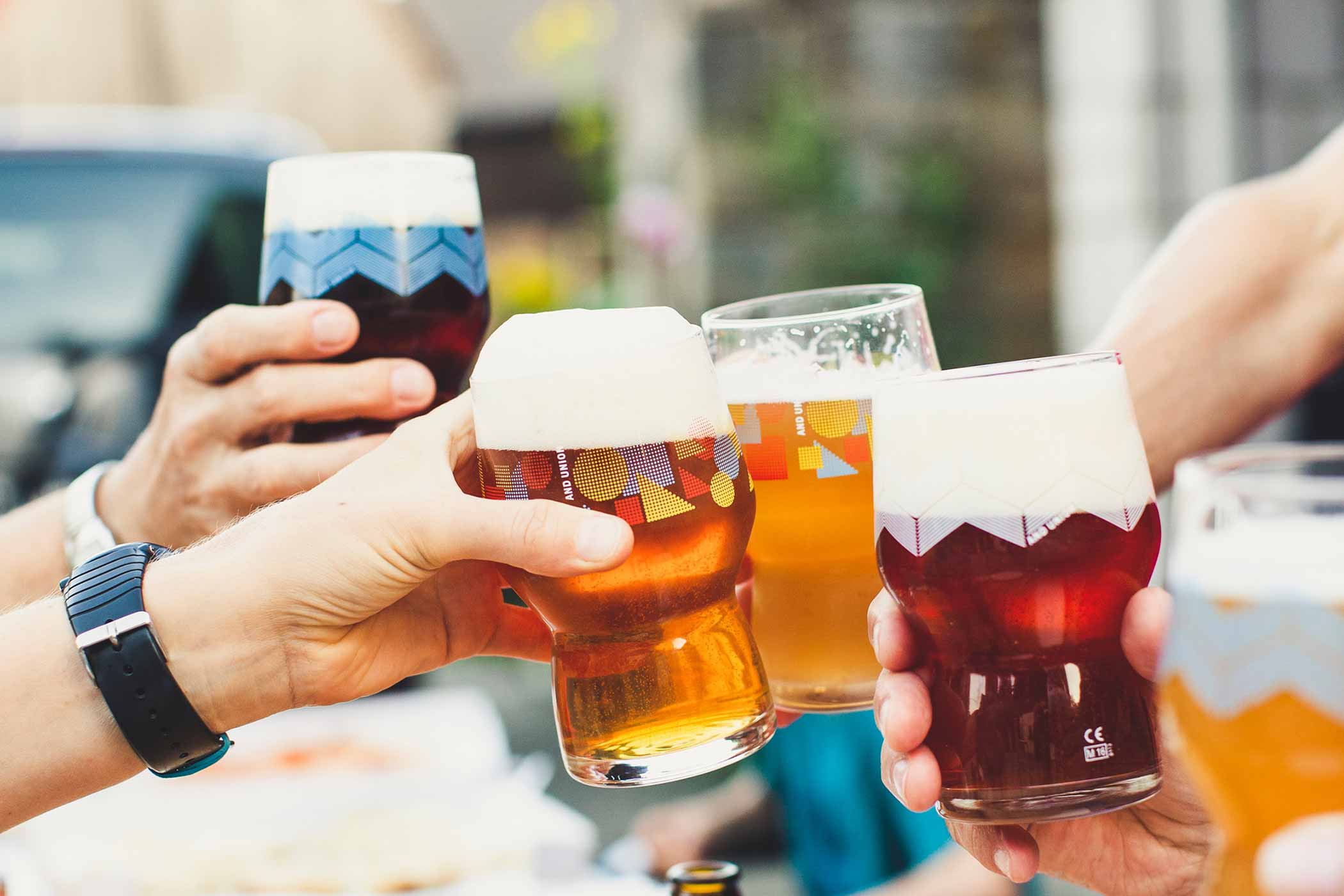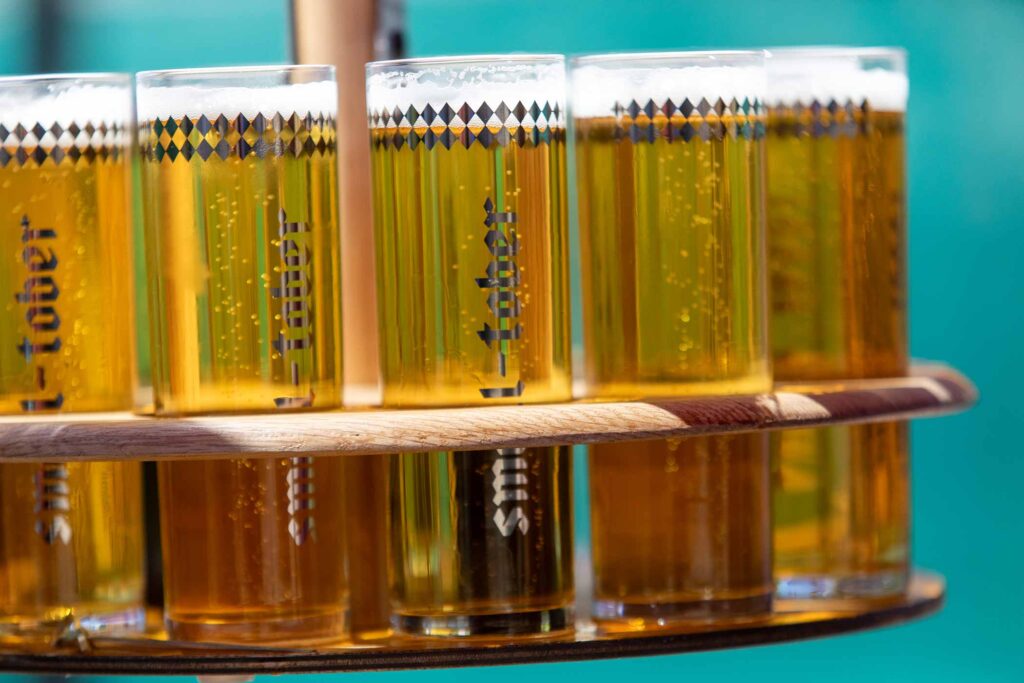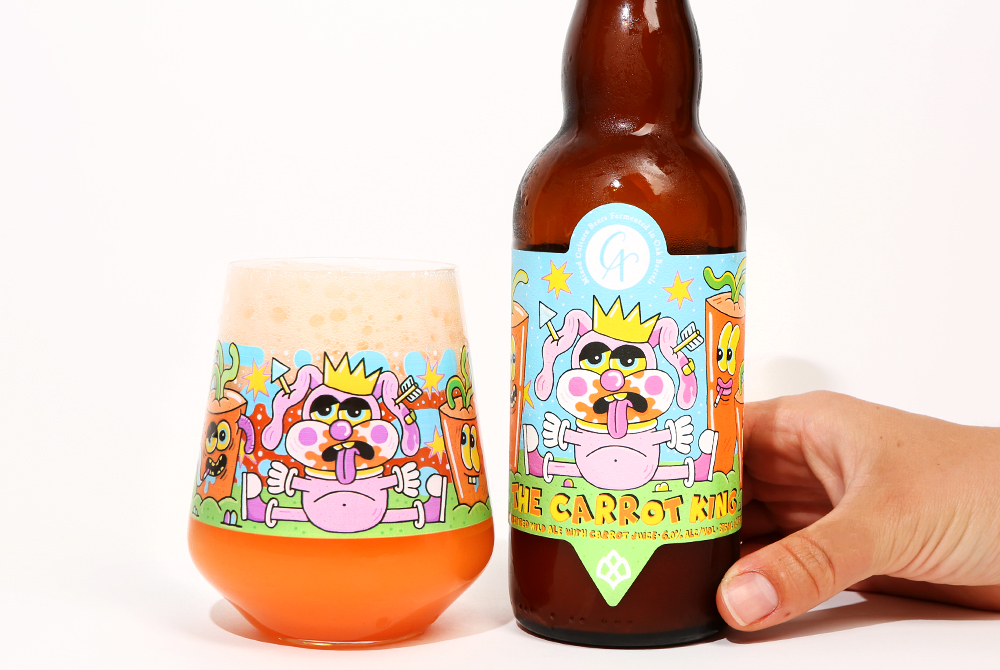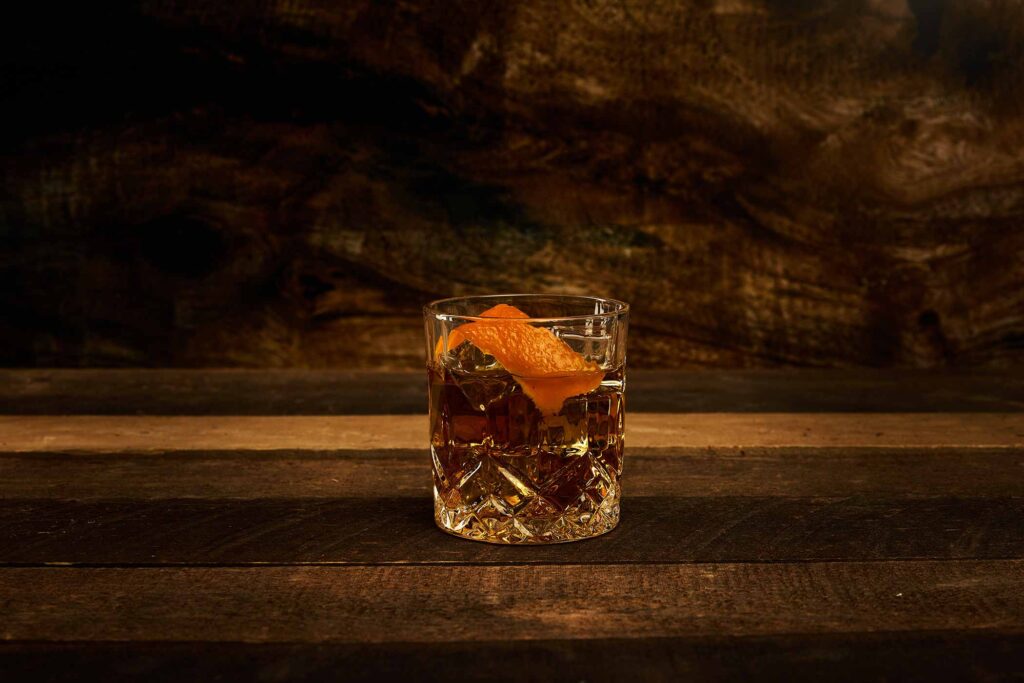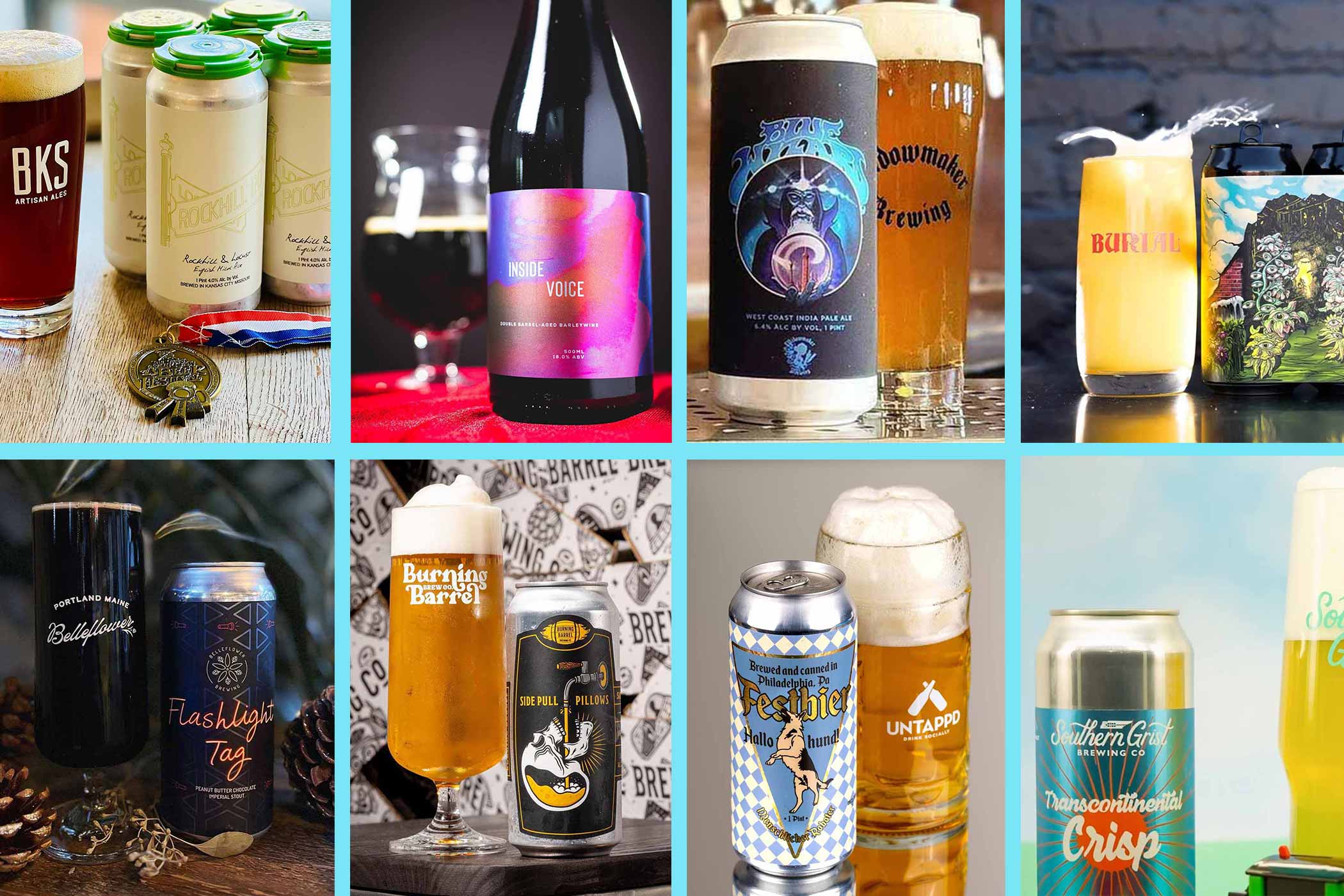Shop
Our Top 11 New ‘Beer’ Resolutions for 2024
Starting the year right.
Looking For More of the Best?
Every early January, we put together a piece on the top trends to look out for in the new year. As we’re wont to do in this industry, we’re constantly looking ahead, seeking out what’s going up, what’s going down, or what’s perhaps just staying the same. (Shameless plug: Look for that piece publishing on Jan. 8, 2024.) But writing and drinking at such breakneck speeds, we found ourselves rarely taking time to slow down and reflect on what we want our beer resolutions to be in 2024.
We’ve asked others to do it, letting brewers share their New Year’s resolutions back in 2021, but we’ve never done it ourselves.
To hammer out our new beer resolutions, we contemplated ourselves as drinkers; we looked inward, searching for the gaps missing in our own knowledge, education, and culture. We introspectively evaluated how we can bring you better, richer, more engaging content, how we can stay valuable and top of mind, and how we can go even further to bring you stories that matter.
This is our first time writing this piece, so it may be a little rough around the edges. But hey, isn’t that the idea of a New Year’s resolution: a goal or challenge worth investing in and discovering over the course of the next twelve months?
We’re about to show you ours, so it’s only fair that you have a chance to share yours. What’s your new beer resolutions? Drop us a line @hopculturemag or [email protected].
Hop Culture’s New Beer Resolutions for 2024
Study For The Beer Judge Certification Program
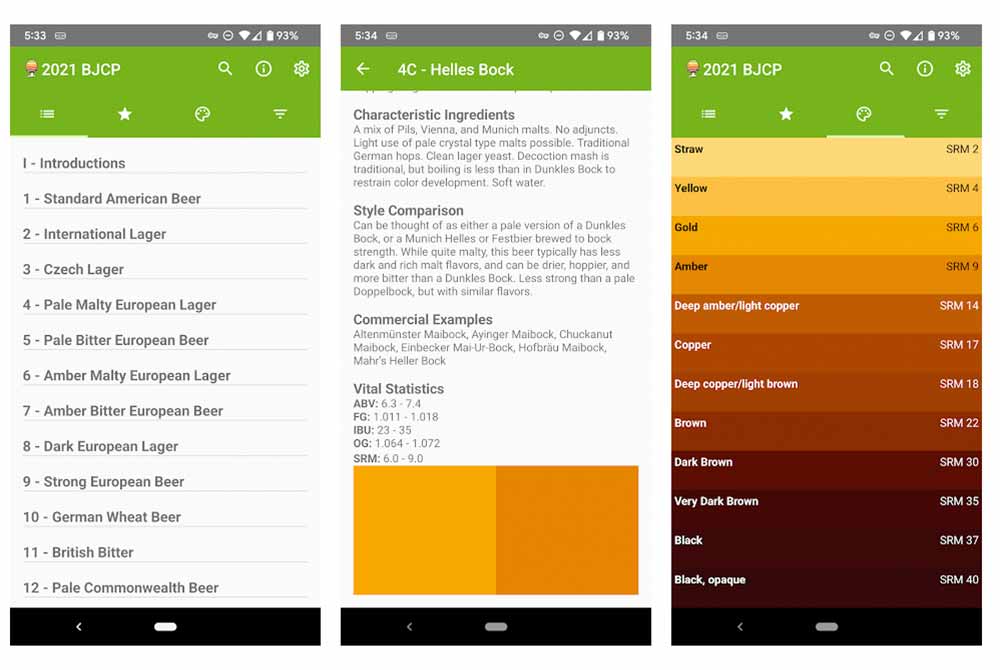
Photography courtesy of Beer Judge Certification Program
Honestly, Hop Culture Senior Content Editor Grace Lee-Weitz has had this one on her list for a while. Growing up and moving in this industry for the last seven years as a Queer woman, Lee-Weitz has, at times, felt imposter syndrome, the need to constantly prove herself.
And while she’s learned everything she knows up until now from the hundreds of articles she’s written, countless people she’s met, interviewed, and shared a beer with, beers she’s tried, conferences she’s been to, breweries she’s traveled to, and books she’s read, she oftentimes still needs to demonstrate her knowledge in order to prove her worth. She constantly battles with feeling confident and feeling doubtful.
Studying for and earning a BJCP Certification is no joke; an intense, rigorous mental process. Completing this program would be a pivotal feather in the cap, so to speak, a fountain of wisdom that she can store away in her mind, making her a better writer, a better drinker, and a better passionate fan of craft beer.
But most importantly, it’s a pivotal achievement worthy of making our list of beer resolutions.
Go to a Hop Harvest
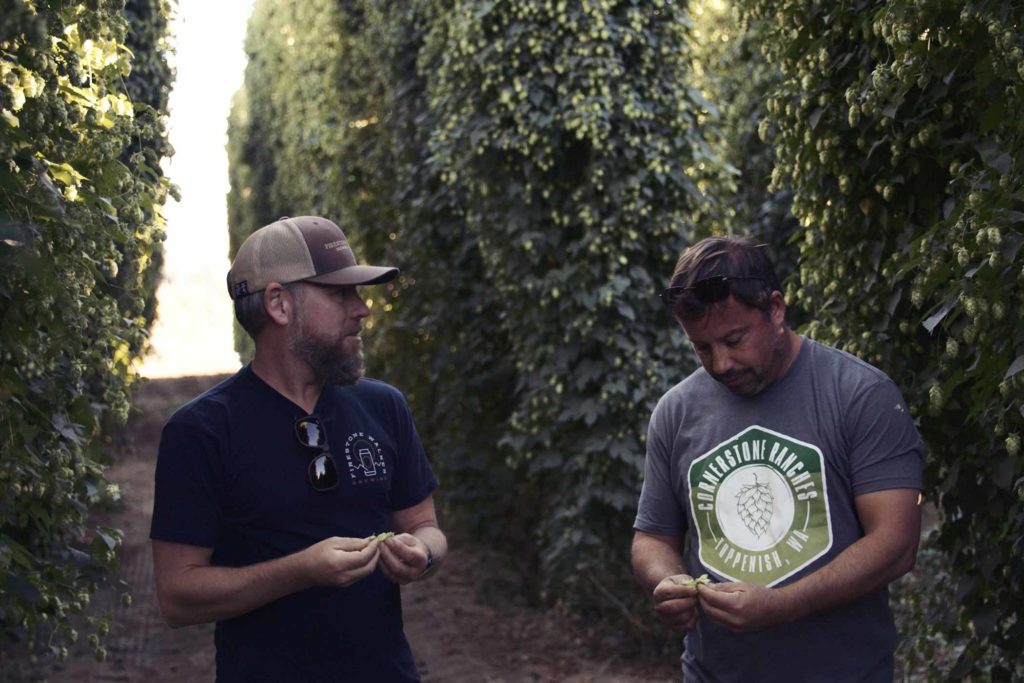
Firestone Walker Brewmaster Matt Brynildson rubbing hops with Cornerstone Ranches Owner Graham Gamache | Photography courtesy of Firestone Walker
Brewers have shared their stories with us of wandering through the bines and enjoying tacos together with hop farmers.
We’ve listened to their adventures traveling to magical places in the Pacific Northwest, Australia, New Zealand, the Czech Republic, or Germany to pick their hop lots for the year. In fact, Monday Night Brewing Brewmaster Peter Kiley once texted Lee-Weitz, “Side note, I’m currently in NZ right now for harvest. Craft beer might be the best industry in the world. Just wanted to share my excitement!”
Since we’ve never needed to pick hops for the year, we’ve never been to a hop harvest. Let’s change that in 2024. We want to understand and learn more about where hops live and, most importantly, the people who toil in the soil year round to provide that essential ingredient to the great beer we drink.
We’re journalists, after all, so seeking out these stories seems like, well, low-hanging fruit of the bine to us!
Vist 10 New Breweries in Our Home State
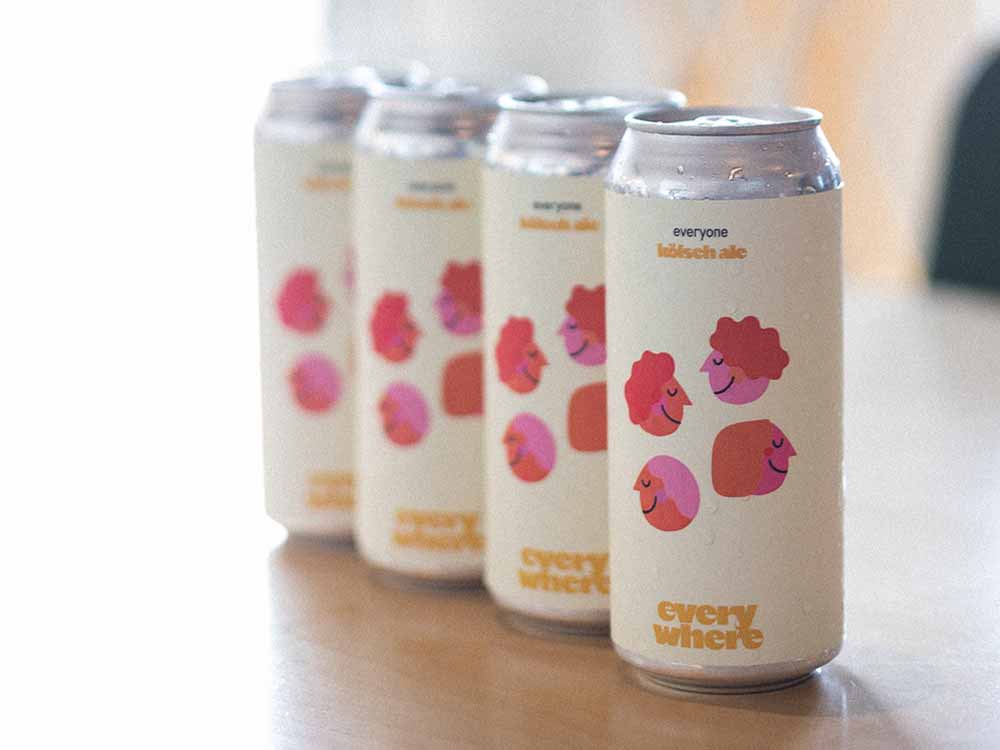
Photography courtesy of Everywhere Co-Founder Daniel Muñoz
Originally for this spot on our beer resolutions list, we wanted to make this ‘try a beer from every brewery in our home state,’ but since we live in California—home to 1,100 breweries—we thought that might be a little ambitious. We’d need to visit about four breweries per day to hit that goal!
Still, there are plenty of breweries close to home that we’d love to visit for the first time.
Off the top of our heads: Some of our Best New Breweries of 2023—Enterprise, Shred, GOAL.
And also coming to mind—Everywhere, East Brother, Green Cheek, North Park, Bartlett Hall, Pure Project, Bagby, Burgeon, Around the Horn, Barebottle, Beachwood, The Bruery, Wild Fields Brewhouse, Cellador Ales, Del Cielo, Border X, Eagle Rock, Epidemic Ales, and MacLeod Ale.
Where else in California should we go? Drop us a line @hopculturemag or [email protected].
Editor’s Note: If you didn’t see a brewery listed above, it could be because we’ve already visited it! E.g., we love Cellarmaker and Humble Sea and have been many times to multiple of their locations.
Drink and Write About Five Beer Styles New to Us
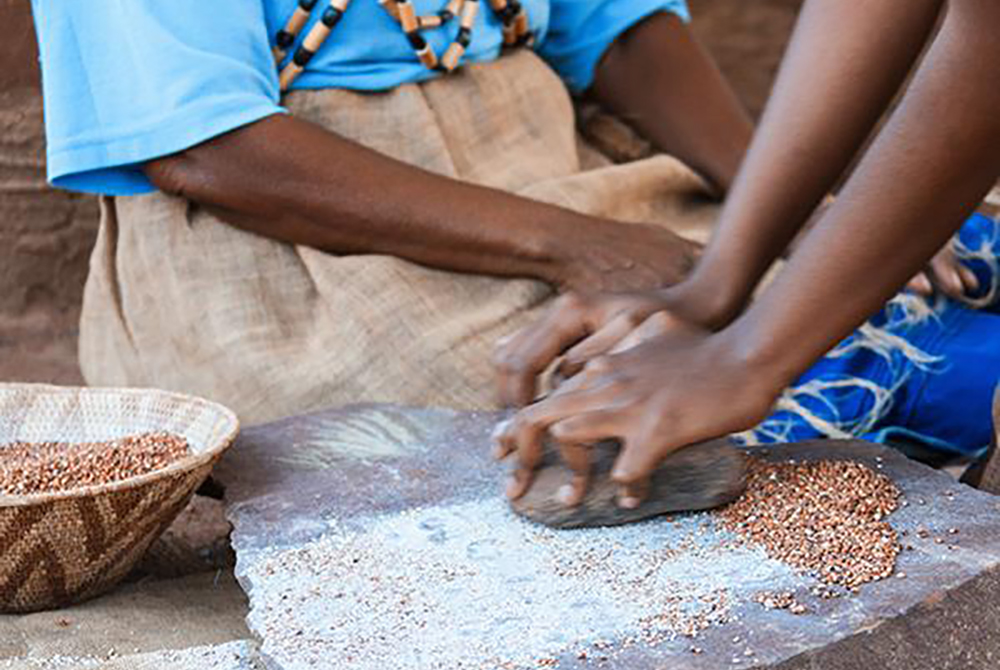
Photography courtesy of King Korn, a traditional sorghum homebrew brand, and the number-one selling homebrew malt in South Africa
We do a pretty good job of taking deep dives into different beer styles. Just this year alone, we covered the hazy pale ale, pre-Prohibition lager, Baltic porter, American vs. English barleywine, and oyster stout, to name a few. Each piece gives you the mechanics of the style, the history, and examples of great versions to try.
In the future, we want to push the boundaries back to the past, covering oft-forgotten, not-often-seen styles with often cultural significance.
For instance, umqombothi, a traditional South African beer made from maize, sorghum malt, water, and yeast. Or pito, a beer made from fermented millet or sorghum native to West Africa.
Other historical styles we could cover include: adambier (dark German strong beer), roggenbier, lichtenhainer (smoked, fruited sour), merseburger (black hoppy ale), kulmbacher (black lager), Burton ale, dampfbier, kottbusser, and zoigl.
Shout out to our good friends at Necromancer, Head Brewer Lauren Hughes, Lead Brewer Nina Santiago, and Founder Ben Butler, who are pros at this and from whom we borrowed some inspiration for this spot on our list of beer resolutions. Spoiler: They’ve already brewed a few of the above styles!
Yes, we are a hazy hop-forward society, but it is incredibly important to remember beer’s roots, that this magical liquid didn’t appear out of thin air from white male homebrewers in America or even Anglocentric countries like Belgium and Germany.
Yes, those people have an important place in our craft beer movement, and those places have worthy drinking traditions.
But the origin of beer goes back to the Sumerians, ancient Egyptians, and tribes throughout Africa who used grains found around them—sorghum, maize, millet, cassava—to brew beer. Often, women brewed the beer inside their own homes.
European colonization and imperialization took these methods and transported them back to their respective countries. And once beer became a public commodity, men stepped in, taking over roles as brewers, innkeepers, and pub owners.
Editor’s Note: Fellow beer journalist Tara Nurin penned a great book diving into beer’s history called “A Woman’s Place in the Brewhouse: A Forgotten History of Alewives, Brewsters, Witches, and CEOs.” If you’re interested in learning more, be sure to check it out.
All we’re saying is that we want to respect and give voices to those traditions and styles that haven’t seen much of the spotlight.
Take One Beer Trip Outside the U.S.
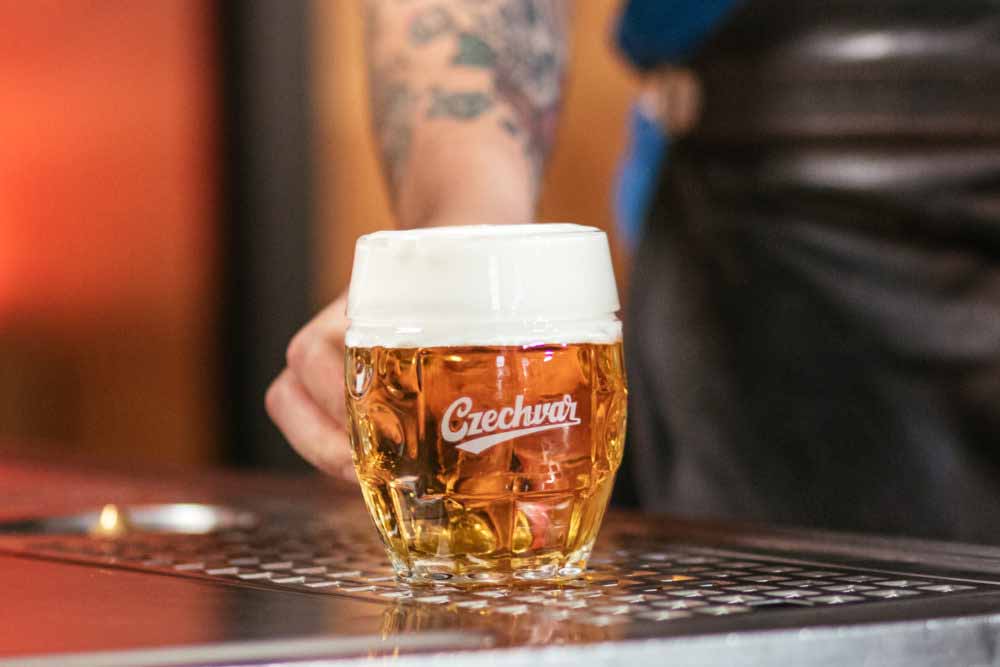
Photography courtesy of Budvar | Czechar
Wow, did we have a freakin’ blast traveling around the world for beer this year! If you haven’t already, check out all of our adventures in the “Top Places We Traveled for Beer in 2023.”
But we don’t want to stop there. We have grand aspirations for travel beer resolutions in 2024. While we can’t expect to get to all the beer places we outlined in our “Top Places for Beer Travel in 2024,” we can make it a goal to get to at least one.
Countries on the bucket list include the Czech Republic, Germany, and England.
Speaking of all three….
Drink a Hladinka, Nadvakrát, Šnyt, and Mlíko
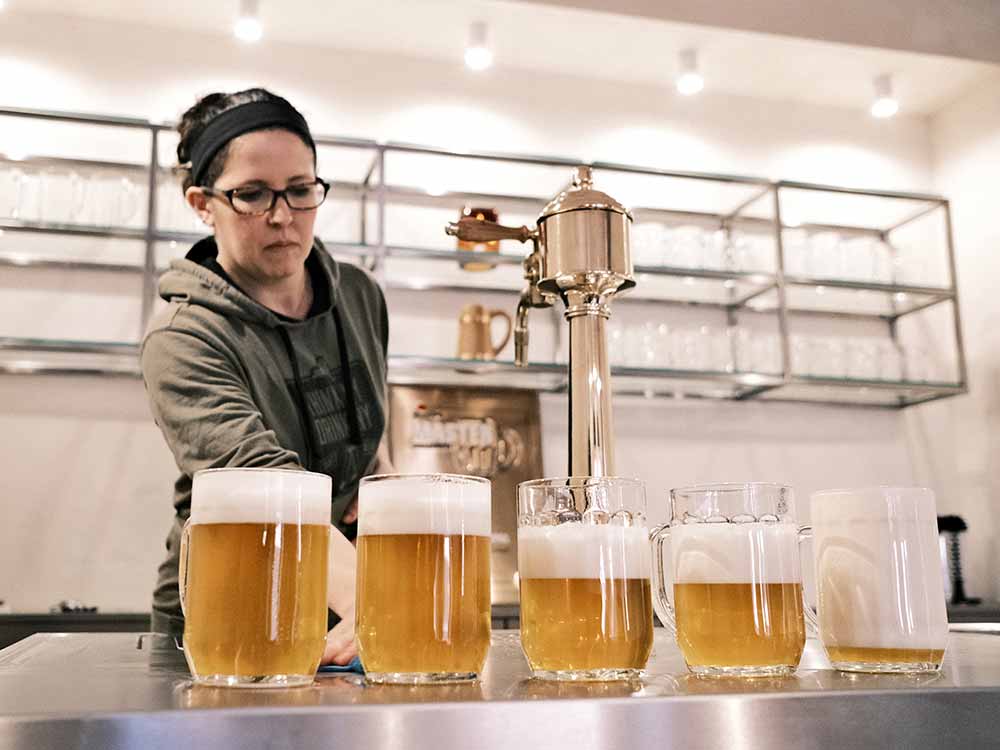
Wild East Brewing Co-Founder Lindsay Steen pours consistently | Photography courtesy of Jan Havránek | LUKR
All types of proper Czech beer pours—hladinka, nadvakrát, šnyt, and mlíko—include different ratios of beer to foam. But not just any foam. Oh no, this is a wet, dense foam filled with flavor and texture. Sipping those clouds of carbonated bubbles is an integral part of the drinking culture in the Czech Republic.
While we, of course, would love to visit the source for one of these pours (aka the Czech Republic itself), finding something similar in the U.S. isn’t off the table.
Many breweries have invested in a LUKR side-pull faucet, which creates this fantastically full foam. Now, you can’t just buy the faucet itself and expect to perfect these pours. Doing the hladinka, nadvakrát, šnyt, and mlíko right means investing in time, training, and technique.
Some breweries we’ve seen nail it include Notch Brewing, Cohesion, Wild East (Co-Founders Brett Taylor and Lindsay Steen were the first graduates of LUKR’s new three-day Czech pour training program!), and Human Robot.
We’ve heard Czech drinking culture is something to behold, so we’d love to go and share those stories with you.
Experience Kölsch Service in Cologne, Germany
Last year, our good friend and beer writer Ryan Pachemayer shared with us all of his adventures enjoying kölsch service—the custom of small glasses of fresh kölsch continually served to you until you’ve had your fill—around Cologne. He wrote an incredible piece for Craft Beer & Brewing called “Where Kölsch Night Is Every Night,” which won a silver medal from the North American Beer Writers Guild about this historic German tradition.
His journey inspired us to write a piece on the phenomenon of American brewers bringing their own interpretations of kölsch service to the U.S.
While we had the chance to participate in a kölsch service at home in San Francisco, we now want to get a taste of the real thing in its birthplace.
Drink Real Ale, Ideally in England
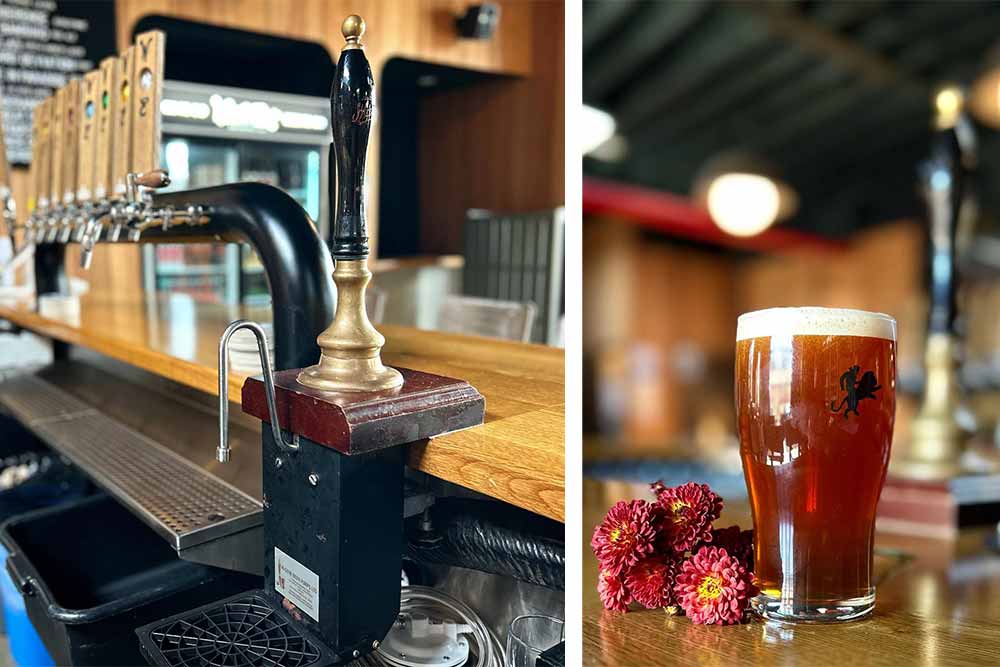
Photography courtesy of @wildeastbrewing
As we mentioned, this year, we covered some storied drinking traditions—Czech pours, kölsch service, and bierstacheln. But one category we haven’t tapped into yet: real ale or cask ale.
A traditional practice in the United Kingdom, real ale serves beer from a cask stored horizontally in a cool cellar. To serve these unfiltered beers without forced carbonation, a bartender must hammer a small wooden peg into the keg and pump the beer out of a specially designed tap. Often called “hand-pulled” beers because of the extra muscle work involved, cask ales come to the drinker softly carbonated (thanks to the natural fermentation that continues in the sealed keg or firkin) around a temperature of 50-55℉.
While a historic way of serving beer in the United Kingdom, real ale almost died off until a small group of devoted fans started the Campaign for Real Ale (CAMRA) in the 1970s.
Since then, they’ve revived real ale with breweries here in the U.S., even taking part in the cask revival (beer writer Courtney Iseman wrote a beautiful piece for Pellicle on this phenomenon).
Ideally, we’ll travel to England for our real ale aspirations, but at the very least, it seems like breweries in New York, such as Strong Rope, Fifth Hammer, and Wild East, all offer cask ale stateside.
Make a Collab Beer
We used to be all about the collabs, traveling around the country to host festivals and stopping by some of our favorite friends to make beers like Spaghetti Dinner, Carrot King, and some we can’t even remember.
But since the pandemic, we haven’t quite gotten back into the groove.
We miss those good times with friends, surfing and sleeping on the floor of Humble Sea, for instance.
Let’s make 2024 the year we come back to the collab!
Want to make a beer with us!? Hit us up @hopculturemag or [email protected].
Have a Beer With One of Our Brewing Idols
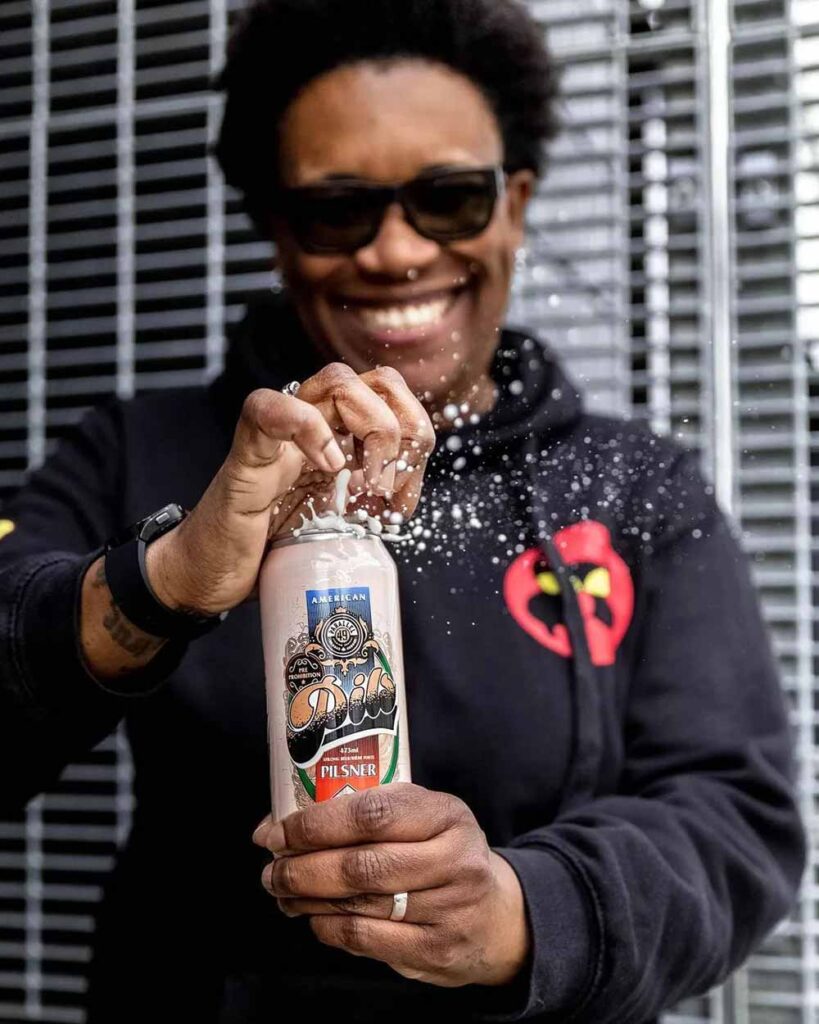
Photography courtesy of @beer_diversity
Honestly, this has been a pretty cool year. We got to chat with Jim Koch about his Boston Lager Remastered, Ken Grossman about the history of Sierra Nevada Pale Ale, Ren Navarro about breaking boundaries with her company B. Diversity. Group; we drank beer with Firestone Walker Brewmaster Matt Brynildson at the epic Firestone Walker Invitational, even met Fritz Maytag at Anchor before it closed, and hung out with Dr. J. at the first-ever bottle share celebrating the National Black Brewers Conference.
Which has us thinking: Who can we share a beer with in 2024?
Got a suggestion? Shoot us a DM @hopculturemag or [email protected].
Drink More Bourbon, Whiskey, and Scotch
You know that we love beer. Duh! It’s why we started a whole crazy magazine dedicated to the thing.
But New Year’s resolutions should be about broadening your horizons. Our Social Media Manager, Magic Muncie, bought a whiskey advent calendar for the holidays so he could expand his palate, trying little tastes of whiskies from across the country. As he noted, aging with used spirits barrels and achieving similar characteristics has become a huge part of the beer industry. Having the wherewithal to understand those flavors needs to be something we stock in our arsenal.
And that got us thinking. You all seemed to enjoy our coverage of bourbon and whiskey, so why not bring you more of what you love?
Sometimes it’s just fun to wisen up our palates and drink something other than beer.
Cheers to all the drinking adventures ahead in 2024!

